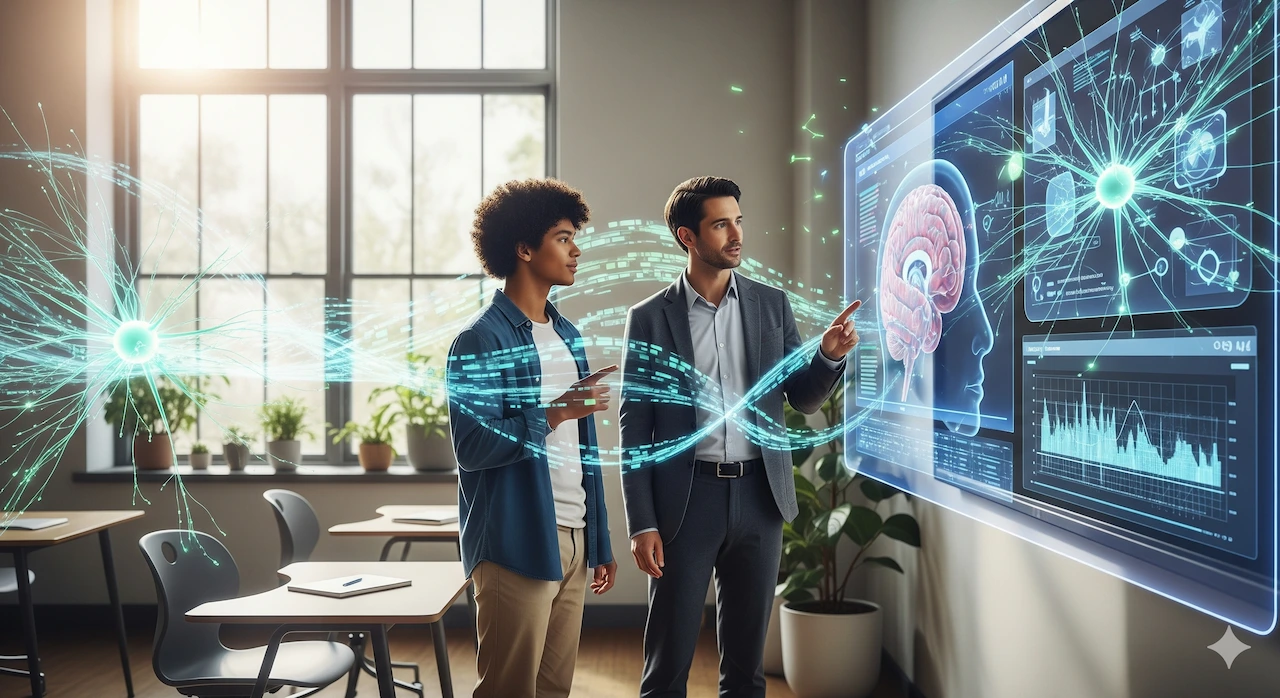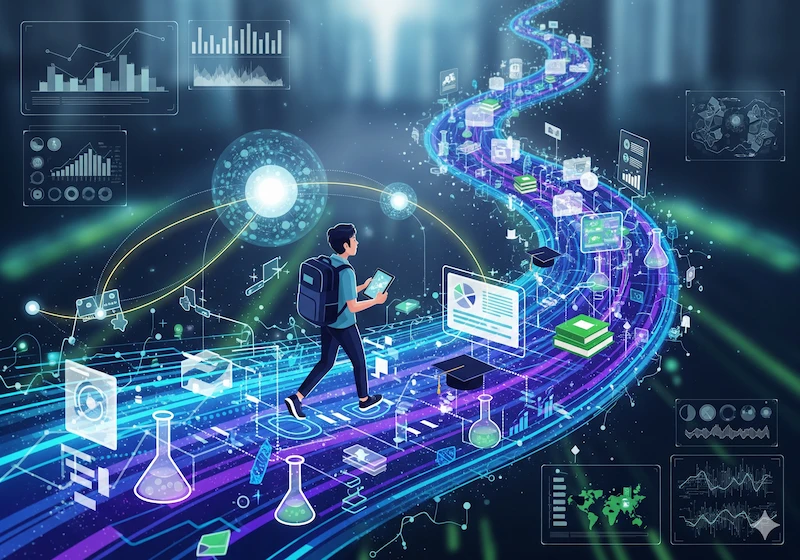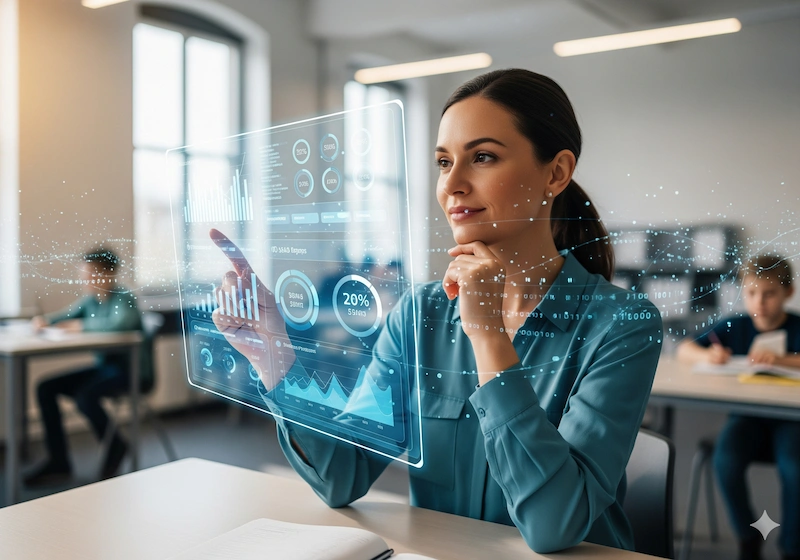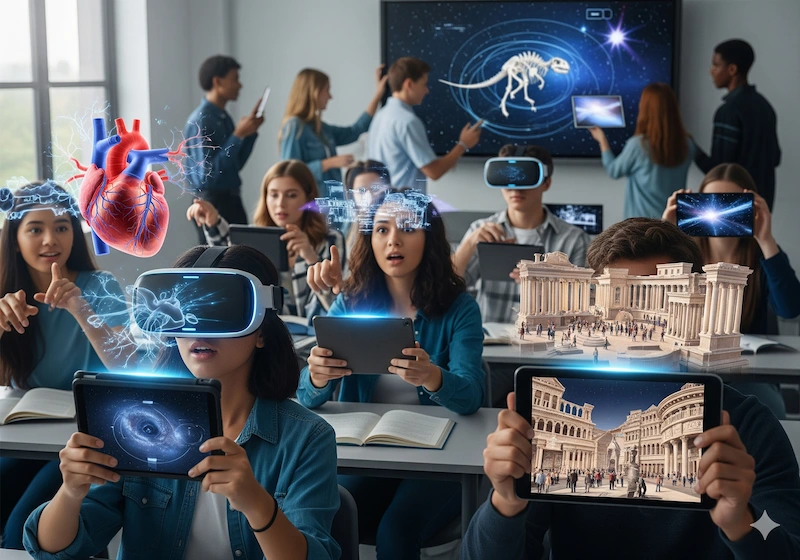GloNews10

The integration of artificial intelligence (AI) into the educational landscape is not just a trend; it’s a transformative force that’s fundamentally reshaping how we teach and learn. Moving beyond traditional methods, AI in Education is providing innovative solutions to bridge the Skills Gap and cultivate Future-Ready Learning.
This shift is crucial for preparing students for a world where continuous adaptation is key. The latest OECD ‘Trends Shaping Education 2025’ report highlights this paradigm shift, emphasizing that educational systems must evolve to remain relevant. Here are 7 specific ways AI in Education is revolutionizing the learning experience.

AI-powered adaptive learning platforms are at the forefront of this revolution. These systems analyze a student’s performance in real-time, identifying their unique strengths, weaknesses, and learning pace. This enables the creation of a custom learning path, providing tailored content and exercises that are more effective than a one-size-fits-all approach.
For a student who excels in math but struggles with reading comprehension, the AI can adjust the curriculum to provide more in-depth practice on literacy skills while accelerating their math studies. This level of personalization, once a luxury, is becoming a standard feature of Future-Ready Learning environments, ensuring that every student can learn at their optimal speed and in their preferred style.
Manual grading can be a time-consuming and tedious task for educators. AI tools can automate the grading of multiple-choice questions, essays, and coding assignments, freeing up valuable time for teachers. This not only increases efficiency but also provides students with instant, specific feedback, allowing them to learn from their mistakes immediately.
This quick feedback loop is critical for solidifying understanding and preventing misconceptions from taking root. The use of AI for these tasks allows teachers to focus on more complex, human-centric aspects of education, such as mentoring students and fostering critical thinking, which directly addresses the pressing Skills Gap.
The concept of a private tutor for every student, once a financial impossibility, is now becoming a reality thanks to AI. AI chatbots and virtual assistants can provide students with 24/7 support, answering questions, explaining complex concepts, and even offering guided tutorials.
This continuous availability ensures that students can receive help whenever they need it, reinforcing the principles of Future-Ready Learning and promoting independent study. For example, an AI tutor could help a student with a late-night homework question on algebra, ensuring they don’t get stuck and become discouraged.

AI can process and analyze vast amounts of student data to provide teachers with deep insights into class-wide trends and individual student needs. This helps educators to proactively identify students who may be struggling and adjust their teaching strategies accordingly. For instance, an AI system might notice that several students are consistently getting a specific type of problem wrong, signaling a need for a re-explanation of that topic.
This data-driven approach allows for targeted interventions, making a direct impact on addressing the Skills Gap by ensuring no student falls through the cracks. For more on how data is shaping education, the UNESCO website offers valuable resources.

AI is a powerful tool for creating highly engaging and interactive content. Through AI, educators can develop virtual reality (VR) simulations, augmented reality (AR) experiences, and gamified learning modules that make complex subjects more accessible and memorable for students. A biology student could use VR to explore the human anatomy in 3D, or a history student could use an AR app to walk through a historical landmark from their smartphone.
This kind of experiential learning is a key component of Future-Ready Learning, helping students move beyond theoretical knowledge to practical application. The shift from passive to active learning is essential for bridging the Skills Gap and preparing students for jobs that require critical thinking and creativity.
AI in Education is making learning more inclusive than ever before. AI-powered tools can transcribe lectures in real-time for hearing-impaired students, translate text into different languages for non-native speakers, and provide text-to-speech functionality for students with reading difficulties.
These innovations remove significant barriers to learning, ensuring equitable access to Future-Ready Learning for all. By accommodating diverse needs, AI helps to create a more inclusive educational environment where every student has the opportunity to reach their full potential, regardless of their physical or cognitive abilities.
By analyzing student data, AI can predict which students are at risk of falling behind or dropping out. This allows schools to intervene early with targeted support, from academic tutoring to mental health resources, helping to prevent academic failure and ensuring that every student has the chance to succeed.
This proactive approach to student well-being is a critical aspect of Future-Ready Learning, as it focuses on the holistic development of the student, not just their academic performance. A student who feels supported and cared for is more likely to stay engaged and motivated, which in turn helps to close the Skills Gap for the next generation of workers. You can learn more about how organizations are using data to improve outcomes on the World Bank website.
The OECD ‘Trends Shaping Education 2025’ report makes it clear: the future belongs to those who are adaptable, creative, and skilled. The transformative power of AI in Education holds immense promise for bridging the Skills Gap and creating a truly Future-Ready Learning environment. By leveraging these seven strategies, educational institutions can move from being passive transmitters of knowledge to dynamic facilitators of growth, empowering students to navigate a world of constant change.